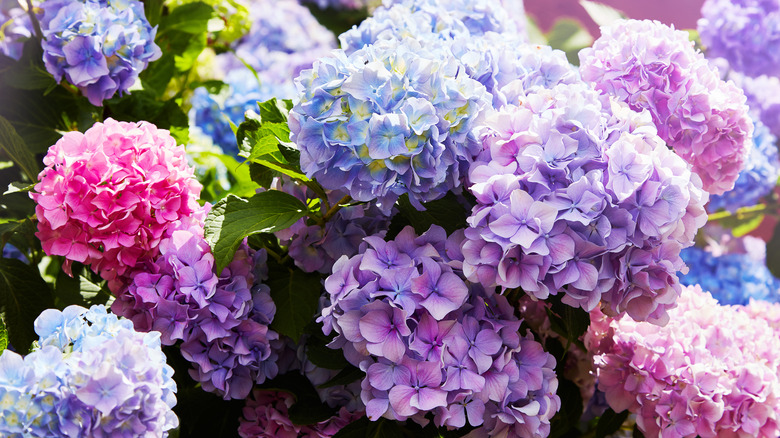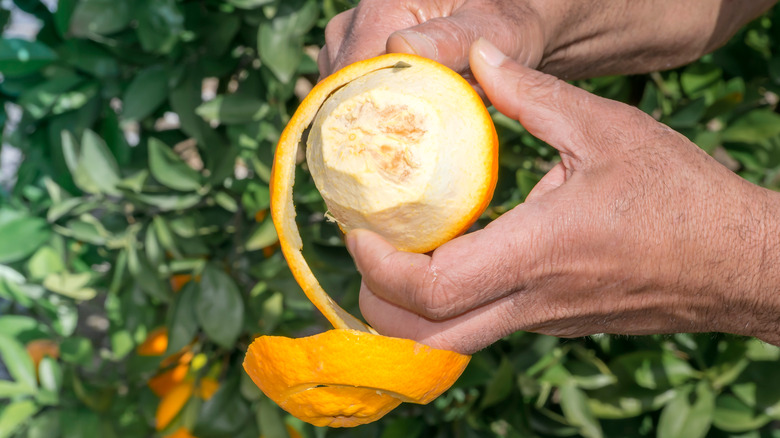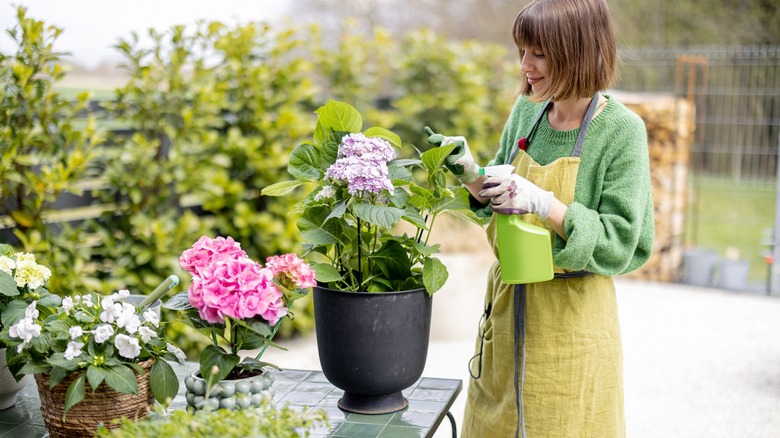This Unlikely Kitchen Scrap Is The Secret To Thriving Hydrangeas
Hydrangeas are a show-stopper in any garden. Their brilliant cluster of flowers is pleasing to the eye and makes them popular among gardeners everywhere. While these perennial shrubs are easy to grow and don't require much maintenance, they must still be looked after. But before you reach for synthetic fertilizers to quickly add some nutrients to the soil, look around the house and see if you've got food scraps of orange peels to use instead. Since orange peels are rich in potassium, phosphorus, and nitrogen, adding them to the soil will help your planted hydrangeas not only survive but thrive in their current growth conditions. Another helpful benefit of these peels is that they can repel pests like aphids from your blooms.
This unlikely kitchen scrap will work as an organic fertilizer to nourish the soil over time. Even better, you won't have to spend money on chemically-induced fertilizers. Want to change the color of your hydrangeas? Orange peels can help you with that, too. To adjust the color of your flowering shrubs, you need to change the acidity of the soil. An alkaline soil (pH higher than 7) will lead to pink flowers, while an acidic soil (pH less than 6) will give you the coveted blue or deep purple blooms. Since hydrangeas are sensitive to the soil pH, they'll begin turning blue once the soil pH becomes 5.5 or lower. The more acidic orange peels you add to the soil, the lower the pH level will become.
Ways to use orange peels as fertilizer
As mentioned, the nutrients found in orange peels promote the growth of hydrangeas. One way to add them to the soil is by simply letting the peels dry and grinding them into a fine powder. Then, you can add the powder to the soil, rubbing it around the base of the plants. This is also the ideal way to change the color of your hydrangeas. The soil acidity will change based on the amount of powder you add; thus, monitoring the soil as you go is important. Keep a soil pH test strip or meter handy to ensure you don't accidentally use too much citrusy powder.
Alternatively, dry out the peels and then cut them into small sections before placing them around the planted hydrangeas, working them into the top inch of the soil. However, you'll have to replace them as soon as they dry out and ensure there's no fruit sticking to the peels, as this could invite pests into your yard. You could also bury the peels deeper to speed up the decomposition process.
How to use orange peels to repel aphids
The natural citrusy fragrance of orange peels will also offend common insects and pests. Further, if aphids are hindering your hydrangea's growth, the d-Limonene in the peels will damage their nervous system and kill them, effectively keeping them out of your garden. In fact, d-Limonene is a common ingredient in organic insecticides, so you'll essentially be making your own product and therefore saving money. Aphids are particularly problematic for young hydrangeas since their feeding and sugary liquid secretion, or honeydew, could lead to yellow leaves and stems. Honeydew can also attract ants, lead to mold growth, and decrease the plant's ability to undergo photosynthesis.
When using this citrus fruit to repel aphids, instead of grinding or cutting the peels up, apply them in another way. To keep aphids away from your precious flowers, boil a few peels in a cup of water for close to 10 minutes. Then, let it cool down before straining it into a spray bottle. Spray this DIY insecticide on the leaves of your plant every three to four days or once a week, depending on the number of uninvited guests camped out in your garden.


